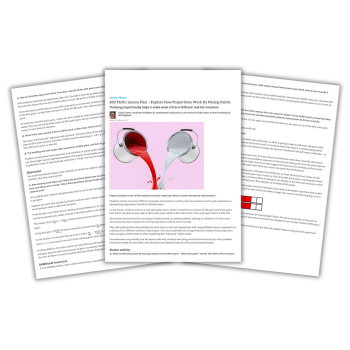In this KS3 proportion lesson plan, students work on a task about pink paint. How much red paint do you need to add to pink paint which is 60% red to turn it into pink paint which is 80% red? The answer may be more than you expect!
Proportionality is among the hardest and most important ideas in lower secondary mathematics. Students need to encounter different examples of situations in which proportions feature. They also need to gain experience at representing proportions visually in different ways.
In this KS3 proportion lesson, students work on several problems relating to a situation of ‘sunk costs’, where paint has been mixed in the wrong proportions and has to be corrected.
They will make up their own problems for each other to solve. They’ll also experiment with using different ways to represent the makeup of the different mixtures of pink paint.
This lesson provides lots of opportunities to explore how proportions work. Students will gain a better sense of what something like “60% pink” really means.
Generalisations are possible, and the lesson ends with students describing what they have found out, what problems they have created for each other, and what they have learned from all of this about proportionality.
Dr Colin Foster is an Assistant Professor in mathematics education at the School of Education at the University of Nottingham. He has written many books and articles for mathematics teachers. Browse more KS3 maths games and lesson ideas.











